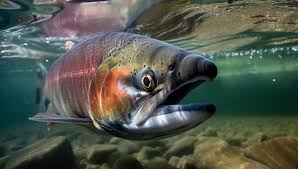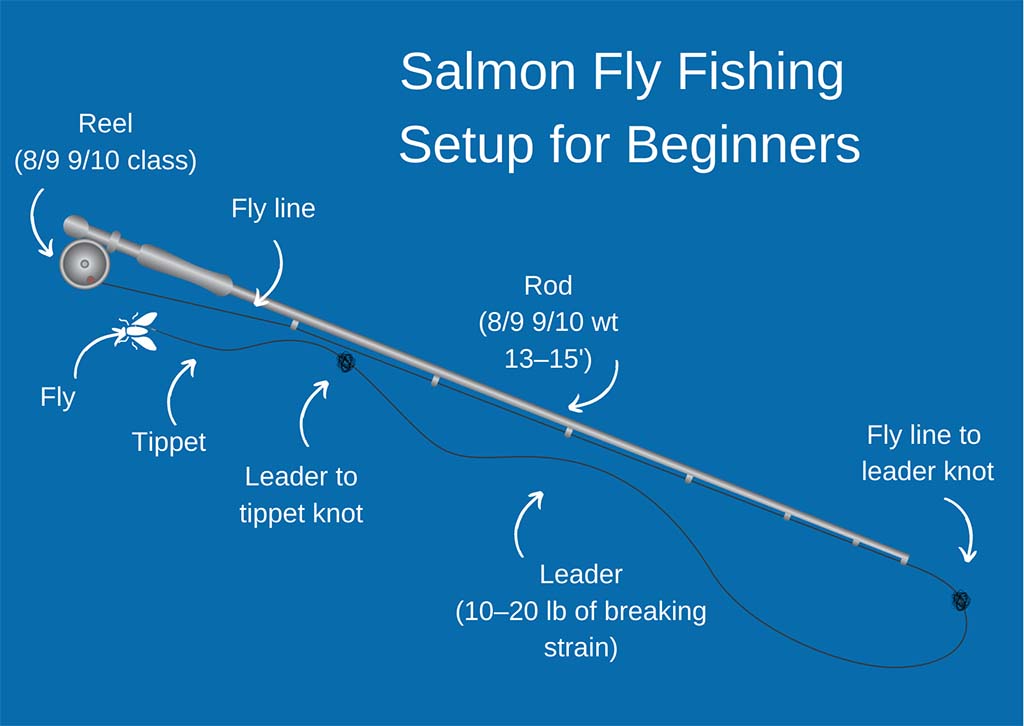Salmon fishing in the US is an experience etched in tradition, a battle of wills between angler and a powerful adversary. From the majestic leap of a Chinook to the tenacious fight of a Coho, these prized fish ignite a passion in anglers across the country. This comprehensive guide equips you with the knowledge and techniques to become a seasoned salmon slayer, targeting salmon that grace US waters.
Decoding the Salmon: A Life Cycle Odyssey
Understanding salmon behavior is paramount for successful fishing. Here’s a breakdown of key factors to consider:
- Migration Patterns:
- Anadromous Journey: Salmon are anadromous fish, born in freshwater, venturing to the ocean to mature, and returning to their natal streams to spawn. This cyclical migration dictates when and where to target them.
- Species-Specific Timing: Different salmon species have distinct migration windows. Chinook salmon, for example, may run from spring to fall, while Sockeye salmon typically return in late summer. Research local salmon runs to time your fishing trip strategically.

- Feeding Habits:
- Oceanic Feast: In the vast ocean, salmon are opportunistic feeders, consuming baitfish, herring, squid, and crustaceans. Their diet fuels their incredible growth for several years.
- Freshwater Focus: Upon entering freshwater, salmon become less interested in food. Their primary focus shifts to spawning, and their bodies undergo physiological changes. However, they will still strike out of aggression, territoriality, or even curiosity.
Equipping Yourself for the Fight: The Right Tools for Salmon Success
Choosing the right equipment is essential for battling these powerful fish:
- Rods:
- Power and Action: Medium to medium-heavy power rods with fast action are the workhorses of salmon fishing. This combination provides the backbone to handle energetic runs and the sensitivity to detect subtle strikes, especially crucial for lethargic pre-spawners.
- Length: For river fishing, a rod length of 8.5 to 10.5 feet offers leverage for fighting large salmon and making long casts. Shorter rods (7-8 feet) can be suitable for smaller rivers or bank fishing.
- Reels:
- Baitcasting Reels: Baitcasting reels offer superior power and control, ideal for battling salmon in fast-flowing rivers. However, they require practice for mastering casting techniques.
- Spinning Reels: Spinning reels are a popular choice for their ease of use and versatility. Choose a spinning reel with a robust drag system and sufficient line capacity (300+ yards) to handle long runs.

- Lines:
- Braided Main Line: Braided line in the 30-50 lb test range is a popular choice due to its strength, minimal stretch, and superior sensitivity for bite detection and effective hook sets.
- Leader: A 10-20 lb test monofilament or fluorocarbon leader offers several advantages. Monofilament provides some stretch to cushion hard strikes, while fluorocarbon offers superior abrasion resistance and near invisibility in clear water. Leader length can vary from a few feet to the length of a deep-diving lure.
- Lures and Baits:
- Spoons and Spinners: Bright, flashy spoons and spinners are effective for attracting salmon with their vibration and erratic action. Choose sizes and colors appropriate for the targeted salmon species and water conditions. Silver, gold, and chartreuse are popular choices.
- Plugs and Crankbaits: Deep-diving plugs and crankbaits that mimic baitfish can be highly effective, especially in larger rivers, estuaries, and lakes where salmon might target preyfish.
- Flies: Fly fishing for salmon with streamer patterns, egg imitations, and nymphs can be a rewarding challenge, particularly in clear, shallow waters.
- Live Bait: In some regions, live bait such as herring, anchovies, or roe can be very effective, particularly in tidal areas and estuaries where salmon might be accustomed to feeding on these baitfish.
Mastering the Art of Presentation: Effective Techniques to Fool the Salmon
Presentation is key to enticing strikes from these wary fish. Here are some effective techniques to consider based on location:
- River Fishing:
- Drift Fishing: A fundamental technique for river fishing. Allow your bait or lure to drift naturally with the current, using enough weight to keep it near the bottom without snagging. This is particularly effective in runs and deeper pools where salmon might be resting or staging.
- Back-Bouncing: This technique involves bouncing your bait off the bottom as you drift downstream. It is particularly effective for targeting salmon in deep holes and runs where they might rest during their migration. Use a heavier weight to achieve the bouncing action and target the bottom layer of the water column.
- Plunking: A stationary fishing method where you cast your bait or lure into a likely holding area, such as deep pools or areas with structure, and wait for salmon to strike. This method is often used in large rivers with heavy current where actively drifting your bait might be less effective.
- Ocean and Coastal Fishing:
- Trolling: A popular method for targeting salmon in the vast ocean and large lakes. Use downriggers to control the depth of your lures or baits, allowing them to mimic swimming baitfish at various water depths. Vary your trolling speed to trigger strikes from salmon at different activity levels.
- Mooching: This technique involves drifting with live or cut bait near the bottom or at mid-depths. It’s an effective method for targeting salmon in coastal waters and estuaries where they might be feeding on baitfish or scavenging for food scraps.
- Casting: Casting spoons, spinners, or plugs from the shore or a boat can be effective, especially when salmon are actively feeding or following baitfish along the coastline. Look for areas with baitfish activity, rips, or current breaks where salmon might be feeding or staging.
- Seasonal Considerations:
- Spring and Summer: During these seasons, focus on coastal areas, estuaries, and the mouths of rivers where salmon are preparing to migrate upstream. Trolling, mooching, and casting can be productive techniques during this period.
- Fall: In the fall, salmon move upriver to spawn. Target deep pools, runs, and areas with structure (boulders, logs) where salmon rest during their migration. Drift fishing, back-bouncing, and plunking become more effective techniques as salmon are less likely to be actively feeding.
- Winter: Winter fishing is more challenging, but some late-running salmon species like Coho can still be targeted. Focus on slower, deeper waters of larger rivers or tailraces below dams where salmon might hold for extended periods. Adjust your presentations to be slower and more subtle to entice lethargic fish.
Additional Tips for Salmon Fishing Mastery
Embrace Technology:
- Fish Finders and Sonar: Fish finders and sonar can be invaluable tools for locating schools of salmon and identifying underwater structures that hold fish. This technology is particularly helpful in larger bodies of water like lakes and the ocean.
- GPS: A GPS unit can help you mark productive fishing spots and navigate back to them on future trips. It can also be helpful for staying on course while trolling or following migration patterns.
Observe the Water:
- Look for Signs: Watch for jumping fish, feeding birds (gulls, terns), or disturbances on the water surface that can indicate the presence of salmon. These visual cues can help you target areas with higher fish activity.
Stay Stealthy:
- Quiet Approach: Salmon can be easily spooked, especially in clear, shallow water. Approach fishing spots quietly, wear camouflage clothing, and make long casts to avoid detection.
Respect the Fishery:
- Practice Catch and Release: Consider practicing catch and release, especially for wild salmon populations. If you plan to keep fish, follow all local regulations regarding size and creel limits.
Be Patient and Persistent:
- Persistence Pays Off: Salmon fishing can require patience and persistence. Don’t be discouraged by slow periods; keep trying different techniques, locations, and depths throughout the day.

Robert Smith is the proud owner of Bait Barrels and Bows, a premier fishing sports store established in 1989. With over three decades of experience in the industry, Robert has honed his skills to become an expert angler, sharing his vast knowledge and passion for fishing with enthusiasts around the world. Through his store and writings, Robert provides invaluable tips and guidance, helping both novice and seasoned anglers improve their techniques and enjoy the sport to its fullest. His commitment to the fishing community is evident in his dedication to quality products and excellent customer service.

